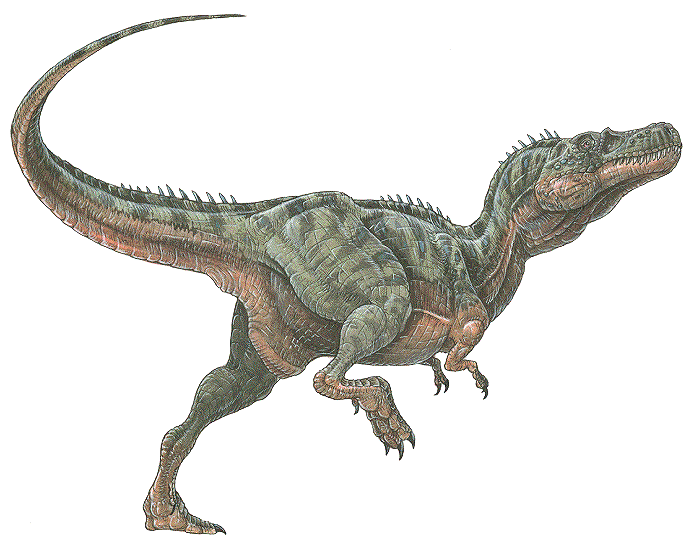|
|
 |
|
Alectrosaurus olseni
(Charles Gilmore,
1933) |
|
 |
|
Name Means: |
"unmarried lizard" |
Length: |
5 meters |
|
Pronounced: |
al-Eck-trow-Saw-rus |
Weight: |
1,000 to 2,000 pounds |
|
When it lived: |
Late Cretaceous - around 96 million
years ago |
|
|
|
Where found: |
Gobi Desert, Mongolia |
|
|
|
|
Introduction |
|
Alectrosaurus seems to have been quite rare.
It was much smaller than Tyrannosaurus rex; it was slender and
does not preserve well. Like other members of the tyrannosaur
family, it was bipedal. There have been a few findings of
Alectrosaurus, and little has been published about them.
printed about them. One important find is that it had a furcula
(wishbone). For many years it was believed that only birds had this
bone. It is now known to be common for a theropod. Since then
other theropods have been found to have had them. |
|
History |
|
Alectrosaurus was discovered in 1923 during one of the American
Museum of Natural History expeditions to China led by Roy Chapman
Andrews. There was confusion when it was found originally, due to the
fact that it was found with a segnosaur. The two animals were thought
to be one. Chapman found a partial femur, tibia, fibula and
pubic foot, It was described in 1933
by palaeontologist
Charles W.Gilmore.. Since then a
partial skull, shoulder girdle, ribs, fircula, should blade and two
vertebrate have been discovered. There are no complete
specimens, but there is enough skeleton material to reconstruct how it
looked. It was re-described in 1989 |
|
Species |
|
Alectrosaurus olseni is the only
species in this genus. |
|
|
|
|
|
|
|
|
Edugraphics.Net | Feenixx Publishing |
|
|
|
|
|

